Kitchen focus: How discreet extraction offers more design flexibility
Mon 4th Mar 2024 by Lisa Hibberd
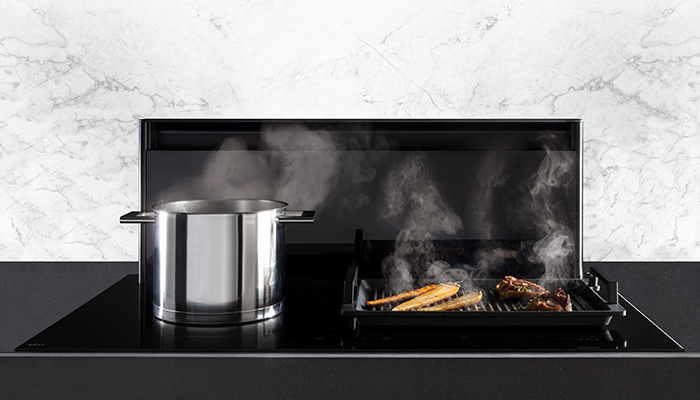
Kitchen focus: How discreet extraction offers more design flexibility
Subtle, concealed extraction is fast becoming a must-have for those looking for kitchen design freedom. Lisa Hibberd takes a look at some of the latest options, and shares advice from those in the know.
“There are various types of discreet or concealed extraction, each offering a range of benefits depending on the consumer’s personal preferences as well as the size and layout of the kitchen space they are going into,” says Jo Sargent, sales & marketing director at Franke UK. “Hob extractors are one of the most flexible types of discreet extraction available, offering the advantage of seamless integration into almost any kitchen, whether on a single worktop run or an expansive island unit. Their availability in vented or re-circulatory mode, diverse width options and their ability to blend seamlessly with the worksurface to provide a stylish and streamlined appearance means they offer both practical and aesthetic benefits. What’s more, the fact that they offer an all-in-one cooking and extraction solution can simplify consumer decision-making.”
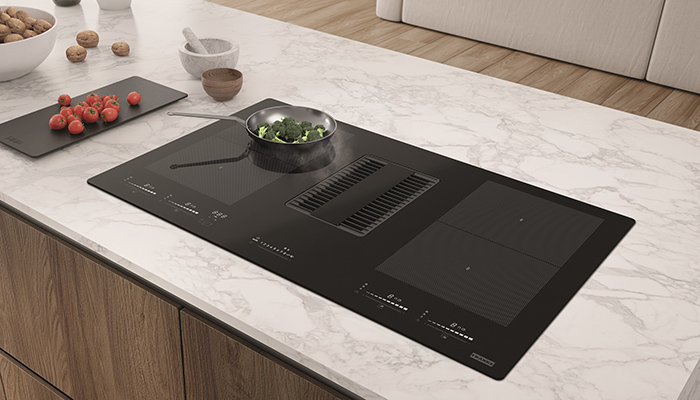
“The integrated nature of discreet extraction allows for greater flexibility in kitchen layout and design as it eliminates the need for a traditional bulky hood,” adds Jessica Rhodes, product & marketing manager at ASKO. “This gives consumers a variety of options to enhance the kitchen with additional features such as cabinets and shelves. These systems also integrate seamlessly into the cooking surface, creating a clean and modern look – especially desirable for consumers who prefer a sleek and minimalistic kitchen design.” Where a kitchen layout features the main cooking area situated on an island, a vented hob or downdraft extractor frees up the space above it, which is often the perfect spot for statement lighting.
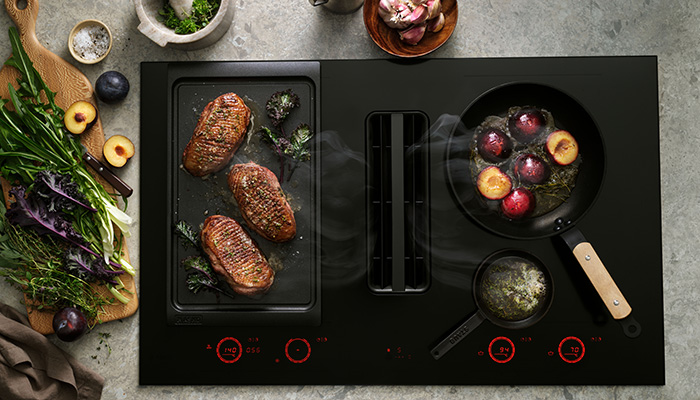
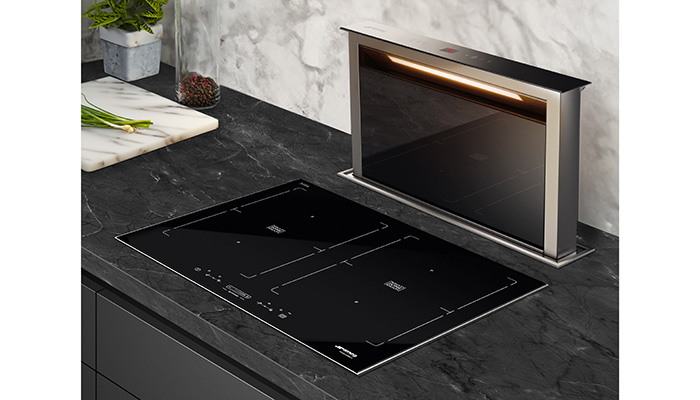
Willi Bruckbauer, founder of BORA, suggests that although the benefits of open-plan living are numerous, there are some considerations. “One of these is cooking odours – in an open-plan kitchen it is important that smells from cooking aren’t left to linger long after the meal has been enjoyed unless the extraction system is sufficient. However, a head-height extractor hood can constrain the room’s design – depending on where it is sited it can create a visual obstacle and restrict the room’s layout, particularly when it needs to be sited above an island unit right in the centre of the kitchen. The solution is the downdraft extraction hob, quite literally removing the steam and odours away from pots and pans exactly as they arise, drawing them downwards before they have the chance to permeate the air. A downward extractor will be also significantly quieter than a head-height model, dealing with the important issue of acoustics in open-plan spaces.”
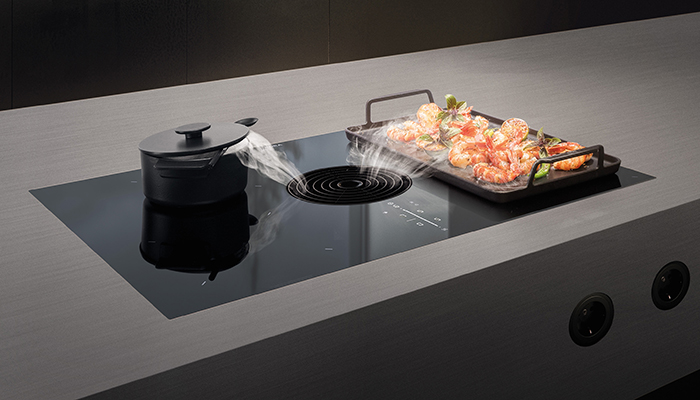
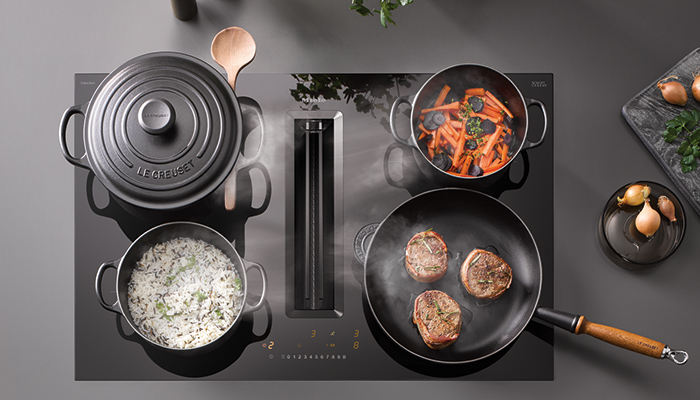
Maurizio Severgnini, MD at Bertazzoni UK, adds: “Discreet extractors work in the same was as visible models, so need to be within the vicinity of the hob. Maximum efficiencies can be achieved with the extraction rate when ducting is kept to a minimum and it’s worth knowing that every bend and metre in the pipework reduces the extraction rate by 10%.”
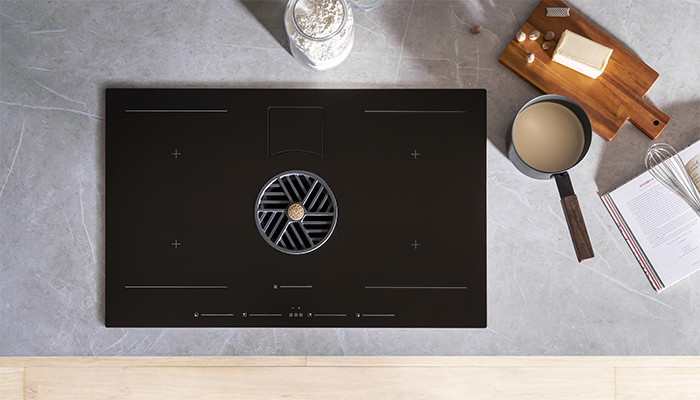
So how can retailers and designers assure their clients that such subtle extraction doesn’t compromise on performance? Simon Plumbridge, category manager at Gaggenau, says: “It is important to stress that the discreet design of the extractor should not affect its functionality. A quality extractor is not only visually appealing but also highly efficient in performing its job. It effectively removes cooking odours, smoke, and grease from the kitchen, ensuring a clean and fresh environment for cooking and dining. It is worth mentioning that the integration of functionality and aesthetics has been a gradual development in the industry. In the past, there have been phases where functionality took precedence over appearance, and vice versa. However, the current trend is to strike a balance between the two. This ensures that the extractor not only looks good but also functions effectively, meeting the needs of modern kitchens and homeowners.”
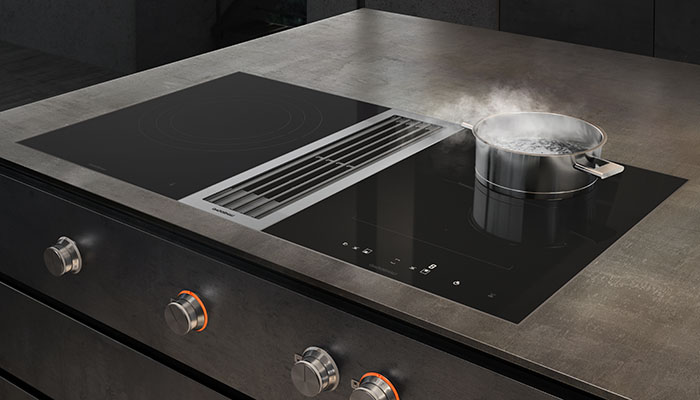
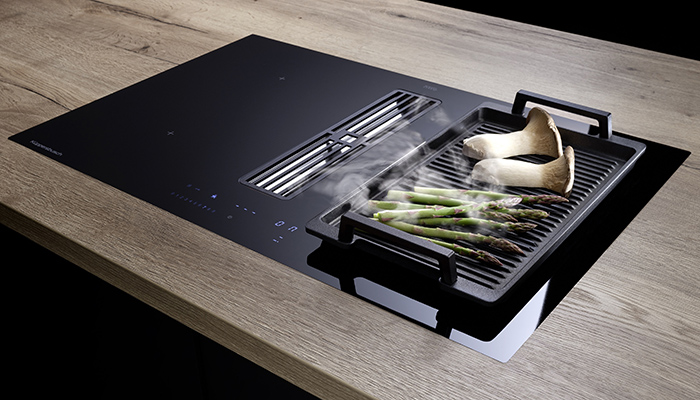
Jenny Hyatt, sales and marketing director, Middleby Residential UK – premium channel, notes that power and performance will differ from brand to brand. “The most important consideration for any client seeking a vented hob is that it offers a range of advanced induction cooking functions whilst delivering extraction that does not compromise the sound of conversation in the kitchen. Novy’s powerful vented hobs, including its Panorama collection of vented downdraft hobs, are certified by Quiet Mark for their ultra-quiet performance.”
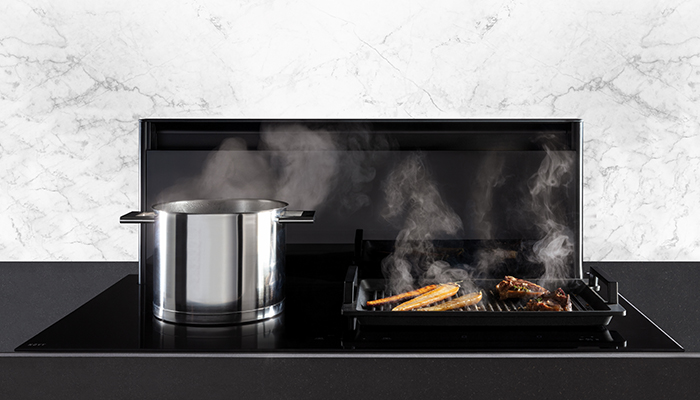
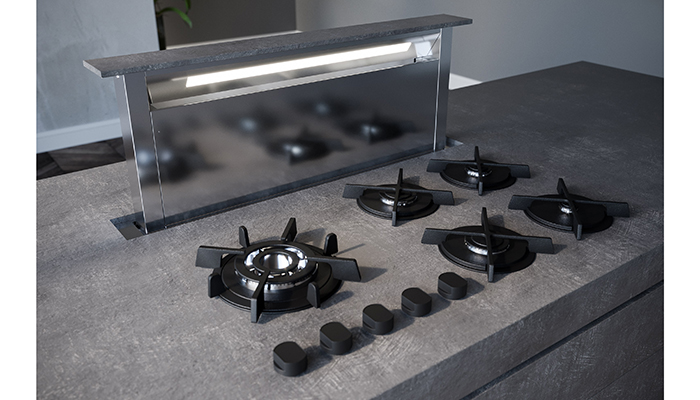
Tags: kitchens, features, discreet extraction, downdraft hoods, vented hobs, appliances, franke, bora, smeg, asko, miele, bertazzoni, gaggenau, küppersbusch, novy, westin
Sign up to our newsletter
Most Read
Crown Imperial – 5 ‘must have’ kitchen trends for 2026
Sun 21st Dec 2025


























